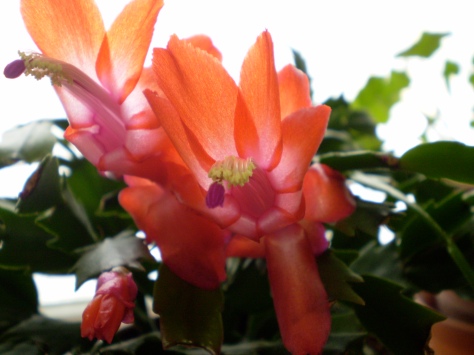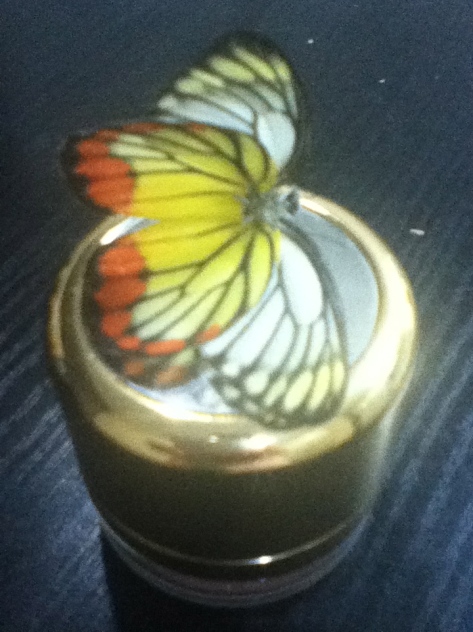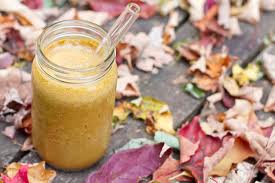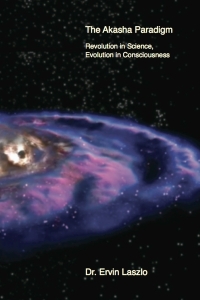Every day I see myself in some way in each of my clients, reminding me of how interconnected we all really are.
Category Archives: Uncategorized
Spring Giddiness
I saw the daffodils out at my Dad’s place on the river this morning, bending their heads under the snowy blankets, almost as if hiding, looking content to sleep just a bit longer. Rumi’s poem reminds me that even though it may feel comforting to cross back through that doorway and lay in the warm comfort of what we know, there is a whole world out there to experience. Spring brings with it an infectious energy that I know I can harness, acting as a catalyst to propel me through that doorway into those new growing spaces in my life that I have been trying to hide from. And even before I spotted the daffodils, I seemed to be doing the same thing as they just as the sun rose. As i lay in bed under the warm and cozy covers looking out at the beautiful lake just outside my window in the pale gray morning light, with the soft snow floating from the sky (like the small dancing particles in Rumi’s poem), i kept telling myself that it was time to get up, get moving. But I was somewhat paralyzed by the comfort of my bed, not wanting to shock my body by the cold morning air. I kept telling myself, “just another minute, just another minute…”, but meanwhile, i had a list of projects calling my name, to get me started towards my new life, projects that i never seem to have enough time for during the week. I literally had to say out loud – get out of bed Laura, get moving, here’s your chance! and i’m like nooooo, i’m so warm and cozy, but at the same time incredulous that i was having this battle with myself. ha haa… So, to commence with Spring, no more “thinking about it”, let’s throw back the blankets together and start creating the life that we LOVE. Spring is here!
Transformation
Laura told me BUTTERFLIES are said to be symbols of transformation. I found him sitting outside on the floor of my balcony and walked past him several days without collecting him. Finally, then, I decided to bend down and pick him up. I figured, if he hadn’t blown away he must still be there for a reason.
Central Asian, Aztec, Zaire, and New Zealand cultures associate the butterfly with the soul, even Christianity depicts Jesus holding a butterfly in Christian art. They are said to represent soul journeys, journeys we all take through the course of our lifetime.
Processed Food ~ Pandora’s Lunch Box
I wanted to share the following from Andy Bellatti’s recent Huffington Post article and highlight the new book he mentions out from Melanie Warner titled Pandora’s Lunchbox. This only adds to the growing nightmare as more and more information comes to light surrounding the food we eat. If there is one thing you do to change your diet, please rule out processed food. Don’t even consider it an option!
What You Don’t Know About Processed Food
You’ve heard of pink slime. You know trans fats arecardiovascular atrocities. You’re well aware that store-bought orange juice is essentially a scam. But, no matter how great of a processed-food sleuth you are, chances are you’ve never set food inside a processing plant to see how many of these products are actually made.
Writer Melanie Warner, whose new behind-the-scenes-look-at-the-world-of-processed-foods book, Pandora’s Lunchbox, is out this week, spent the past year and a half doing exactly that. In her quest to explore the murky and convoluted world of soybean oil, milk protein concentrates (a key ingredient in processed cheese), and petroleum-based artificial dyes, she spoke to food scientists, uncovered disturbing regulatory loopholes in food law, and learned just how little we know about many of the food products on supermarket shelves.
After reading Pandora’s Lunchbox, I sent Melanie some burning questions via email. Here is what she had to say:
The term “processed food” is ubiquitous these days. The food industry has attempted to co-opt it by claiming canned beans, baby carrots, and frozen vegetables are “processed foods.” Can you help explain why a Pop-Tart is years away from a “processed food” like hummus?
You have to ask yourself, could I make a Pop-Tart or Hot Pocket at home, with all those same ingredients listed on the package? I don’t know anyone who could do that in their home kitchen. How would you even go about procuring distilled monoglycerides and BHT, for instance? These are highly-processed food products loaded up with sugar and sodium, subjected to abusive processing conditions, and assembled with a litany of additives, many of which nobody ever consumed prior to a hundred years ago.
Yet it is possible to make your own black beans at home by soaking and then cooking them. You could even attempt a rudimentary canning operation to preserve them. You can also make hummus by grinding chickpeas with a few other ingredients like lemon juice. The same goes for frozen vegetables and even baby carrots, though homemade baby carrots wouldn’t look as pretty as the ones you buy at the store. The “processing” these foods go through is minimal and not disfiguring. The end result still looks like a food that once grew on a farm.
Many people are put at ease when government agencies and the food industry state that controversial substances are “generally recognized as safe.” Why is this not as comforting as it sounds?
The idea of something “generally recognized as safe” seems so reassuring, but the more you know about the U.S. system of food ingredient regulation the less cause there is for comfort.
For starters, the GRAS process, as it’s known, is one of self-regulation. If a food ingredient company wants to introduce a new additive, they — not the FDA — hire some experts or a consulting firm to make the determination about whether this new ingredient is safe. Sometimes you’ll hear that company X has been awarded “GRAS status” for its new ingredient, but the FDA doesn’t award anything. The agency merely has the option to review what companies tell them.
Except when they don’t. In a glaring regulatory loophole that dates back to 1958, the GRAS system also happens to be voluntary. It’s perfectly legal for companies to keep the FDA in the dark about new additives, and consequently there are some 1,000 ingredients the FDA has no knowledge of whatsoever, according to an estimate done by the Pew Research Center.
And the “testing” most additives go through isn’t exactly rigorous. While older additives have been subjected to actual studies, most newer ones haven’t. According to Pew, of the estimated 5,000 additives going directly into our food, less than 50 percent have been the subject of toxicology testing on animals.[1] And hardly any go through testing for the way we actually consume food additives, which is in combination with many ingredients at once.
Although the FDA seeks to reassure us they are keeping a close watch over our food, the job of rigorously regulating thousands of food additives is simply too big for an underfunded agency. BHA, a “probable carcinogen” according to the Department of Health and Human Services, is still allowed in food.
The food industry has often reacted to nutritional concerns by fortifying nutrients into their products. What did you glean from your research about the way these synthetic vitamins are created, and how are they different from the nutrients intrinsically found in foods?
Many of the vitamins we consume, whether in supplements or a box of cereal, come from China. They are produced in enormous factories scattered throughout the eastern half of the country, and these factories account for at least half of all global vitamin production.
It’s often assumed that vitamin C comes from maybe an orange or vitamin A from a carrot, but nothing could be farther from the truth. Vitamin C starts with a corn ingredient and then undergoes a complex, multi-step bacterial and chemical process. Vitamin A comes from acetylene gas, a chemical derived from petroleum refining. And vitamin D, most surprisingly, starts with sheep grease. Ships loaded up with sheep wool regularly depart from Australian ports and make their way to China.
The most obvious way a nutrient made in Shenyang differs from one engineered by Mother Nature is that nature’s vitamins always come packaged with all sorts of other helpful stuff, like fiber, additional nutrients and antioxidants. This synergy may be the key to vitamins really helping us stay healthy. They may need other components to help them work most effectively.
You spoke to many food scientists and visited many processing plants. What is one anecdote or moment that stands out to you most during the course of your research?
I was struck by how many of the people I talked to in the food industry don’t actually eat much of what their industry produces. One flavorist told me she eats at Subway only as a last resort, when she’s traveling and there’s nothing else around.
When I asked them about the dichotomy between their eating habits and those of the people who regularly consume their products, their response was either 1) “We’re just giving people what they want; nobody is forcing anyone to eat anything,” or 2) “It’s unrealistic to think that everyone can eat fresh foods.”
To me, number one seems a bit disingenuous because of the massive volume of marketing and advertising the industry undertakes, and number two perpetuates a financially convenient cynicism. Nothing is going to change if we’ve already concluded that Americans really don’t want healthy, fresh, high-quality food.
You investigated how soybean oil is made. Can you explain why calling it “natural” is a complete misnomer?
It’s not easy getting mass quantities of edible oil from soybeans, which are small, brittle beans containing less than 20 percent oil. First you have to drench them with hexane, a toxic chemical solvent that is known to cause nerve damage in humans. The hexane percolates through the soybeans several times and is then removed from the oil (any residues that remain are small).
After that you have to treat the oil with sodium hydroxide and phosphoric acid, then bleach it with a filter, and deodorize it under heat and an intense vacuum. Then often the oil is hydrogenated or interesterified, allowing it to be more stable for frying or other high-heat conditions. Calling any of this “natural” is a farce.
Not to mention the fact that 93 percent of all soybeans are genetically modified, a technology most people think doesn’t deserve to go anywhere near the word “natural.”
Let’s talk dairy for a minute. Milk protein concentrates are a rather controversial ingredient many people are unaware of. What does the inclusion of milk protein concentrate in a food product say about it?
It says that the manufacturer is trying to cut corners and save money, which is understandable since all large publicly traded corporations are constantly under enormous pressure to cut costs. Milk protein concentrate can help replace the cheese that goes into boxed macaroni and cheese or the milk in processed cheese slices.
If you see milk protein concentrate in your Greek yogurt, it means the manufacturer has skipped the expensive step of straining the yogurt and has added milk protein concentrate, or MPC, to boost the protein levels (they’ve probably also added in some type of starch to thicken the yogurt). As a powder, MPC is much more durable and easier to work with than milk or cheese.
MPC is made by a process of ultrafiltration and microfiltration, which separates milk according to its different molecular fractions. It’s just one product that comes from the industrial disassembly of milk. You can also get whey protein concentrate and caseinate.
Milk, regardless of what you think of its nutritional merits, is a real food. MPC is not.
What is your answer to those who think “better-for-you” processed foods (such as fiber-enhanced protein bars and omega-3 fortified cookies) are “a baby step” towards better health for Americans?
One word: Snackwells. In the early ’90s, at the zenith of low-fat mania, Kraft introduced these “healthier” cookies. They had only 55 calories per cookie and much of the fat had been taken out (and replaced by emulsifiers, starches and gums). Eager for a hall pass on guilt, cookie lovers went nuts, buying up multiple packages and probably eating more than they would have otherwise, erasing any calorie reduction advantage.
It’s a case that illustrates how “healthier” processed foods often don’t promote health; they just end up confusing people. Is a fiber-enhanced protein bar better than a regular protein bar with heavy processed ingredients and almost no intrinsic nutrition? Only if your standards for “better” are really low.
We’re better off getting fiber from eating an apple or having some rice and beans. This way, we get other nutrition our bodies need and will feel like we’ve actually eaten something filling. All these refurbished, less bad products only keep us tethered to a merry-go-round of inferior choices. The answer is making real food the foundation of our diets.
References:
[1] Thomas G. Neltner, et al. “Navigating the Food Additive Regulatory Program.” Comprehensive Reviews in Food Science and Food Safety vol. 10 (2011).
For more by Andy Bellatti, click here.
For more healthy living health news, click here.
New Metabolism Healthy Tips and Meal Ideas
New Metabolism Healthy Tips and Meal Ideas.
This pumpkin smoothie looks amazing!! I have all the ingredients due to the fact that I’m making the Pumpkin Oatmeal tomorrow! I love the addition of Chia seeds, what great texture! Trader Joes has some organic pumpkin purée that is clean, without additives and is on special this week. Check it out!
Yours in Health,
Dr. Tyson
Understanding the Power of Gratitude
Understanding The Power of Gratitude
Stephanie came across this timely article from Huffington Post’s, Wake up World, as Thanksgiving is right around the corner. There’s a link at the bottom of this post to get the full article plus a wonderful 2 minute gratitude meditation from Deepak Chopra (who, if you haven’t heard him, has the most amazing, soothing, transportive voice) you can do every morning upon awakening or just before slipping into bed. We also thought it would be a fun to share a small gratitude list and invite everyone to join in. Won’t that be fun!?! Sometimes, I take things for granted in my life and it isn’t until I hear or even receive a suggestion by someone else that i have awareness for the infinite possibilities to add to my own list. So by sharing, we can plant new seeds in our hearts and grow our collective garden of gratitude bigger and Bigger and BIGGER! Please visit our lovely garden when you have a chance…
 Always begin with gratitude. This is the wisdom advice that comes to us from many of the world’s indigenous and contemplative teachings. In this spirit, we begin our first blog for The Huffington Post exploring this profoundly transformative spiritual practice, and invite you to join us in taking this powerful awareness and action into your heart and onto your path of deepening spirit in daily life, work, and relationships.
Always begin with gratitude. This is the wisdom advice that comes to us from many of the world’s indigenous and contemplative teachings. In this spirit, we begin our first blog for The Huffington Post exploring this profoundly transformative spiritual practice, and invite you to join us in taking this powerful awareness and action into your heart and onto your path of deepening spirit in daily life, work, and relationships.
The practice of gratitude antidotes two root sufferings that pervade the human experience. The first can be characterized as a feeling of “insufficiency” — not having enough or not being enough. This fundamental sense of dissatisfaction opens the way to the second kind of suffering — being incessantly busy trying to get more or be more in order to somehow fill this inner feeling of discontentment and lack. Living with an inner attitude of scarcity and poverty-consciousness also makes us prey to being manipulated by external forces that tell us that we will find happiness and satisfaction — finally — if we only acquire or consume this product or that, or once we go to this place or take some other action “out there.” Our preoccupation with seeking inner satisfaction from external sources keeps us on a never-ending merry-go-round of pursuits and distractions, always waiting for and expecting happiness to come to us from the outside. After the temporary pleasure or sense of accomplishment dissipates and wears off — as it always most certainly will — we find ourselves once again pursuing the next “fix.”
The miracle of the practice of gratitude is that it reverses this pattern of looking outwardly for satisfaction, and instantly puts us in touch with all the many gifts and blessings already present in our life. We shift from spinning in perpetual motion on the wheel of seeking happiness from the outside-in to generating happiness from the inside-out. This practice is easy to do and can be done anywhere and any time. The main thing is just to begin to weave this practice more and more often, and more and more regularly, into your life.
For the full article: http://wakeup-world.com/2011/07/08/understanding-the-power-of-gratitude/
Flowing
 My intuitive life coach (also my dear friend, Janese) told me that being separated from my sisters wasn’t going to be easy, that it would feel like we were missing limbs, or that it would be like ripping off a band-aid and having that stingy ouch where it parted from your body. … sigh…was she ever right! I miss my sisters soooooo, but I see how much we are all growing into ourselves, redefining, reshaping, and strengthening and healing those ouchy parts where we were once connected so that we can build new, stronger, healthier connectors. … it’s work! But I have a great feeling about it. We are just trying to relax in the flow for now *:)
My intuitive life coach (also my dear friend, Janese) told me that being separated from my sisters wasn’t going to be easy, that it would feel like we were missing limbs, or that it would be like ripping off a band-aid and having that stingy ouch where it parted from your body. … sigh…was she ever right! I miss my sisters soooooo, but I see how much we are all growing into ourselves, redefining, reshaping, and strengthening and healing those ouchy parts where we were once connected so that we can build new, stronger, healthier connectors. … it’s work! But I have a great feeling about it. We are just trying to relax in the flow for now *:)
What is Akasha Think?
I was reading the latest Newsletter from Tapping the Source and found two articles of interest from Dr. Ervin Laszlo on the Akasha Paradigm.
For complete article in The Huffington Post, posted July 10, 2012, click on link below:
http://www.huffingtonpost.com/ervin-laszlo/akasha-think_b_1654078.htmlFor 2nd article in Tapping the Source click below:
http://tappingthesourcemovie.com/tapping/index.php?option=com_content&view=category&layout=blog&id=6&Itemid=2Poem by Edward Hays from “Earth Prayers”
O sacred season of Autumn, be my teacher, for I wish to learn the virtue of contentment. As I gaze upon your full-colored beauty, I sense all about you an at-homeness with your amber riches.
You are the season of retirement, of full barns and harvested fields. The cycle of growth has ceased, and the busy work of giving life is now completed. I sense in you no regrets: you’ve lived a full life.
I live in a society that is ever-restless, always eager for more mountains to climb, seeing happiness through more and more possessions. As a child of my culture, I am seldom truly at peace with what I have. Teach me to take stock of what I have given and received, may I know that it’s enough, that my striving can cease in the abundance of God’s grace. May I know the contentment that allows the totality of my energies to come to full flower. May I know that like you I am rich beyond measure.
As you, O Autumn, take pleasure in your great bounty, let me also take delight in the abundance of the simple things in life which are the true source of joy. With the golden glow of peaceful contentment may I truly appreciate this autumn day.










